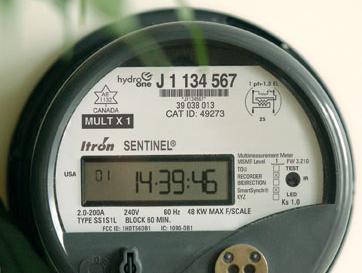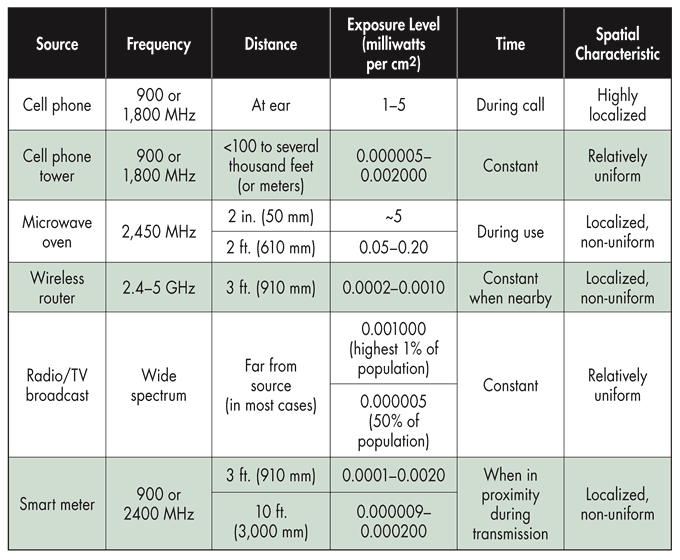Robert, where does your information come from about smart meters being "200 times more toxic than a cell phone"? If you look at the chart up there, you'll see the exposure level even at close proximity during transmission is many orders of magnitude lower than that of a cell phone. Do you have the same fears about your television, your microwave, and the wireless router at the local coffee shop? Smart meters are new, but EMFs are not.
Blog Post
Public Lukewarm About the Smart Grid, Despite Benefits

I had the honor of being within a few feet of a barn owl this weekend at the wildlife festival at the Southern Vermont Natural History Museum. Kept alive after being injured years ago and now a frequent visitor to classrooms and museums, this bird of prey was perched on the arm of a handler, who wore thick falconry gloves.
Unlike hawks and eagles, which hunt by sight and chase down their prey at great speed, the barn owl can hunt entirely by sound, and uses velvety-soft wings to glide in for the surprise catch. To help locate mice in snow, leaves, or hay, barn owls have asymmetrically placed ears: instead of being opposite each other, as human ears are, barn owl ears are 15 degrees above and below center. The minute time difference--as little as 0.00003 seconds--at which sound hits the ears allows the owl to triangulate and tell whether the mouse is left or right, near or far, and up or down.
Our electric meters are dumb
Compared with barn owls, our electric meters are pretty dumb. They detect just one piece of information--how much electricity is being used, measured in kilowatt-hours on your electric bill--and while you can look at a meter and see how much power is flowing at a given time, meters are typically read once a month, or even less often, and need to be visited in person.
If you wanted to design a meter to provide information for accurate monthly billing, this is how you would do it. But let's say you, as a consumer, wanted to know how much power you were consuming at a given moment, and be able to easily make adjustments to your demand to spend less money, particularly if your utility prices power differently depending on the time of day. (It costs utilities more money to deliver power during "peak" periods, but they often charge one rate for an entire billing period.)
Demand response and the smart grid
Or let's say you were the utility, and on a hot summer day when everyone's air-conditioners were cranking up, you'd like to be able to crank something else down--like say, everyone's washing machines--to smooth out demand. Doing so might help you meet demand with more efficient "baseload" power plants, keeping generally less-efficient "peaking power plants" offline.
SUPPORT INDEPENDENT SUSTAINABILITY REPORTING
BuildingGreen relies on our premium members, not on advertisers. Help make our work possible.
See membership options »In these cases you might want to have a "smart grid." The "grid" part of the equation is the network that conveys electricity from plants to consumers. It includes power lines, substations, transformers, and switches. Just like a "smart" phone opens up a world of applications that come from adding a computer to your phone, the "smart" part of the grid means computerizing the electric utility grid.
Appliances and other potential innnovations
All the meters, voltage sensors, fault detectors, and more, are enabled with digital sensors and two-way digital communication. The central utility can "listen" to the devices and adjust and control them from a central location.
One potential smart-grid innovation is for appliances within homes to be embedded with devices that would allow them to receive signals from the utility telling them when rates are favorable for turning themselves on or performing energy-intensive functions, like automatic defrosting on a refrigerator. General Electric is putting this technology into refrigerators, ranges, clothes washers and dryers, dishwashers, and microwave ovens. (It says that customers will be able to override the automatic functioning.) One study in Washington State showed that consumers, armed with devices informing them of favorable times to use energy-intensive appliances, saved money.
Public distrust of utilities and smart meters
Widespread deployment of smart grid technologies may be a ways off, however. As Alan Meier wrote earlier this year in Home Energy magazine (My Friend the Smart Meter), utilities, regulators, and governments have done a terrible job in deploying smart meters. Weak public relations and policy efforts have left a vacuum of public opinion, which has gradually filled with distrust.

Chart: Some critics have raised concerns about radio frequency (RF) emissions from smart meters. As shown in this chart, risk of exposure is very low compared with the risk of RF exposure associated with other common devices. RF exposure from cell phone use, for example, is many orders of magnitude higher--in part because the device is used right next to the head. Source: EPRI
As Meier wrote, "The balance of benefits from smart meters overwhelmingly favors the utility. Among other features, smart meters permit time-of-use pricing. This is a sensible idea, and if consumers carefully limit their electricity demand--yet another complex technical concept to understand and manage--they will get lower bills. But without simple in-home devices and controls, a great many customers will enjoy few or no financial benefits, no matter how hard they try to manage demand. Then, to add insult to injury, privacy restrictions won't even give customers ownership of their consumption data. Right now, some customers can't even access their data." (See Maryland for an example of a failure to get the public on board due to concerns about pricing.)
Are wireless devices a health hazard?
Furthermore, some people have been freaking out about the radio waves generated by smart meters, which use wireless technology to transmit data to utilities. As power and gas companies have begun installing them, some customers have protested (with a few reporting the onset of mysterious illnesses after installation), and some studies have claimed that radio frequency exposure might exceed U.S. Federal Communications Commission (FCC) limits.
Although the objectivity of this study is challenged by smart meter opponents, one industry investigation, using empirical data from two areas in California, found that the exposure risk from smart meters is much lower than that associated with many common household items that people use frequently and keep much closer to their bodies, like cell phones and microwave ovens.
Published September 27, 2011 Permalink Citation
(2011, September 27). Public Lukewarm About the Smart Grid, Despite Benefits. Retrieved from https://www.buildinggreen.com/blog/public-lukewarm-about-smart-grid-despite-benefits
Comments
Sorry, I meant EP-electromagn
Sorry, I meant EP-electromagnetic radiation!
Ya but, ya but, its EMF outpu
Ya but, ya but, its EMF output is 200 times more toxic then a cell phone. Now granted, we don't stand in front of it all day, but mine is on my deck, so when summer barbecues, and kids playing on the deck, they would get a large dose of it...!
Do I change my location of my smart meter, at thousands of $$, or do I move my gas main on my barbecue, more money, or stop barbecuing altogether?
Again I see manufacturing without long term testing, to rush a product out on the market so someone can become rich at our expence, and long term health issues...again!
While the RF output from Smar
While the RF output from Smart Meters may seem relatively miniscule, a hundred million of them will add considerably to the smog of electro-magnetic pollution that may well be the greatest threat to life on earth, rivaling global warming and the sixth great species extinction. Robert O. Becker (1923 ? 2008), orthopedic surgeon and researcher in electrophysiology & electromedicine, professor at Upstate Medical Center in SUNY Syracuse and Director of Orthopedic Surgery at the VA Hospital, Syracuse NY - after a lifetime of bio-electrical research, concluded: “I have no doubt in my mind that, at the present time, the greatest polluting element in the earth’s environment is the proliferation of electromagnetic radiation.” Dr. Neil Cherry (1946 -2003), Associate Professor of Environmental Health at Lincoln University, New Zealand, predicted that soon, due to EMF exposures, cancer will not occur at its 1900 level of one in 100, nor at its late-century level of one in four, but will erupt in each of us several times in a lifetime. William Rea, MD, Founder & Director of the Environmental Health Center, Dallas & past President, American Academy of Environmental Medicine: “Sensitivity to electromagnetic radiation is the emerging health problem of the 21st century." Samuel Milham MD, MPH, Medical epidemiologist in occupational epidemiology, and first scientist to report increased leukemia and other cancers in electrical workers and to demonstrate that the childhood age peak in leukemia emerged in conjunction with the spread of residential electrification: “Very recently, new research is suggesting that nearly all the human plagues which emerged in the twentieth century, like common acute lymphoblastic leukemia in children, female breast cancer, malignant melanoma and asthma, can be tied to some facet of our use of electricity. There is an urgent need for governments and individuals to take steps to minimize community and personal EMF exposures.” Blake Levitt, award-winning science journalist who has researched the biological effects of nonionizing radiation since the late 1970’s, in her article "The Stupidity of The ‘Smart’ Grid": "Other countries are far ahead of us in calling for precautionary measures. New Zealand counties have outlawed SmartMeters because of fires. The European Union recommends that people keep wireless use to a minimum. In France, the national library system has outlawed Wi-Fi computers throughout that nation’s libraries because librarians became ill. The German government recommends that citizens maintain their landline phones and that people of childbearing age not use wireless computers on their laps due to fertility comcerns. There is massive resistance over SmartGrid deployment throughout Europe."




Add new comment
To post a comment, you need to register for a BuildingGreen Basic membership (free) or login to your existing profile.